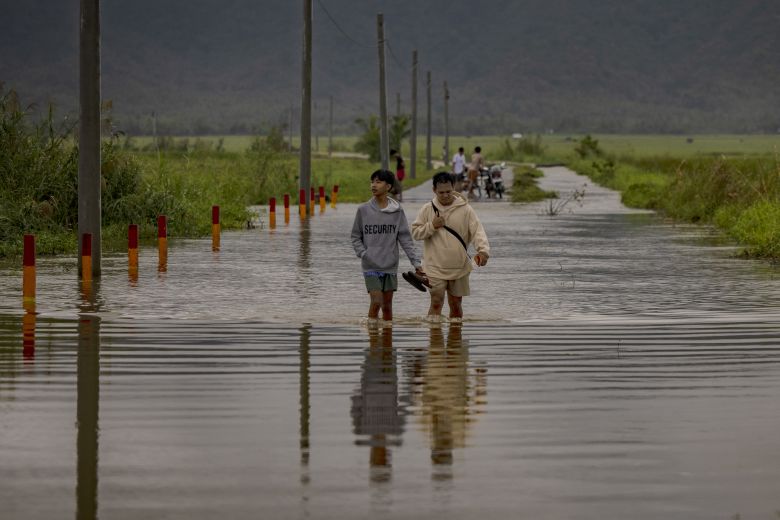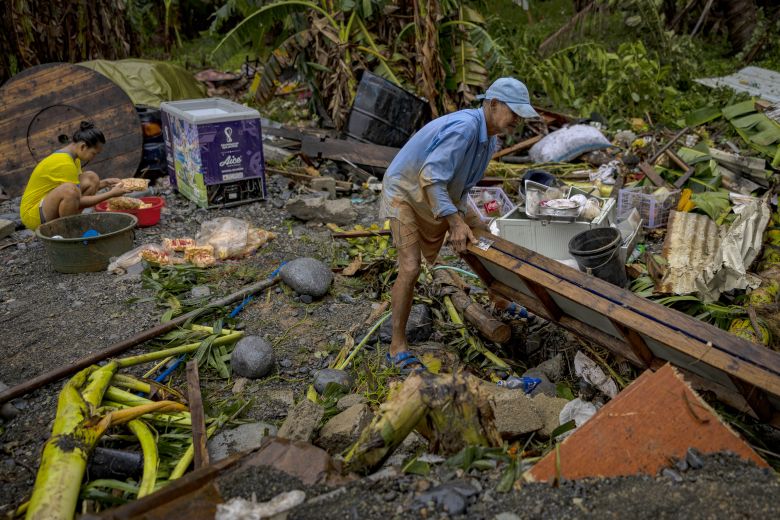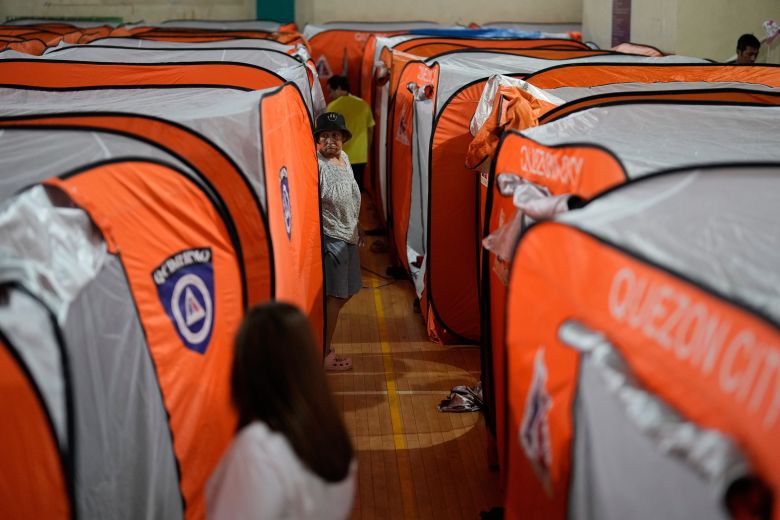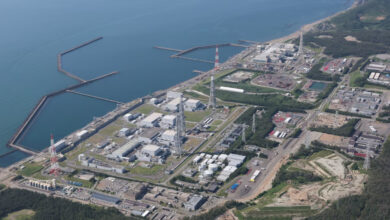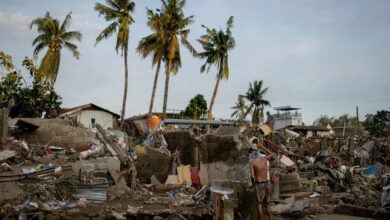
Typhoon Fung-wong triggered floods and landslides, cut power to entire provinces and killed at least four people, including two children, before barreling out of the Philippines on Monday.
Fung-wong, known locally as Uwan, follows on the heels of Typhoon Kalmaegi, which killed almost 200 people in the central part of the archipelago nation, as well as five people in Vietnam.
About 1.4 million people were evacuated ahead the typhoon making landfall on Sunday night, according to the Office of Civil Defense. Fung-wong slammed into the coastal municipality of Dinalungan, on the main island of Luzon, with sustained winds of up to 185 kph (115 mph) and gusts of up to 230 kph (143 mph).
A mudslide buried a house and killed two children in the town of Kayapa in central Luzon, regional civil defense official Alvin Ayson told Reuters news agency Monday.
They followed the deaths of two people — one who drowned in Catanduanes province and a woman who died after being trapped under the debris of a collapsed home in Catbalogan City, according to the civil defense.
The storm, with a footprint that spanned nearly the entirety of the archipelago, lost strength as it swept through mountainous northern provinces and agricultural plains overnight, before heading into the South China Sea toward Taiwan, according to the Philippines’ weather agency PAGASA.
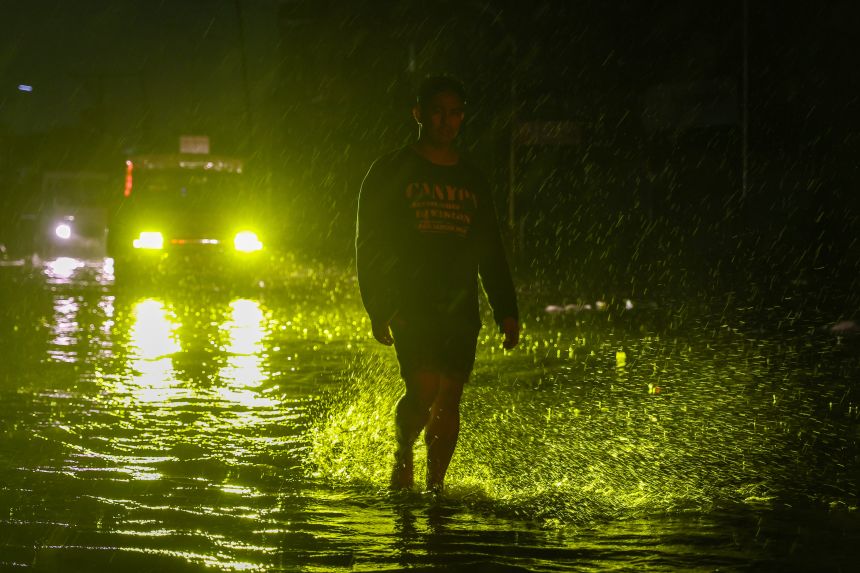
Taiwan is now bracing for Fung-wong, with school closures announced in parts of the eastern county of Hualien, and evacuation orders issued in flood and landslide-prone areas, Taiwan’s Central News Agency reported.
Dramatic video from the Philippines showed rescuers braving strong winds and homes submerged in water as recovery efforts continued overnight into Monday.
Drone footage from Reuters showed vast areas of flooded farmlands in Nueva Ecija province, while other videos showed massive waves crashing into the Catanduanes coastline, flooded streets, and water surging into a building in Aurora province, while families queued for food in shelters.
About 1.4 million residents took emergency shelter at gymnasiums, theaters and relatives’ homes before the typhoon hit, with 318,000 remaining in evacuation centers on Monday, officials said.
“We could not sleep because of the winds hitting our metal sheets and tree branches falling,” Romeo Mariano, who sheltered with his grandmother at home in Isabela province, told Reuters.
“When we got out to check our home, we saw the damage.”
Filomina Mariano, a 69-year-old resident in Santiago City told Reuters: “I was not able to sleep last night. I told my grandchildren to pray for our safety. I was just sitting the whole night waiting for the storm to pass.”
Around 1,000 houses were damaged in the storm, Bernardo Rafaelito Alejandro IV of the Office of Civil Defense (OCD) said, adding that some homes remain blocked by landslides and rescuers are working to reach them once conditions improve Monday.
“While the typhoon has passed, its rains still pose a danger in certain areas in northern Luzon, including in metropolitan Manila,” Alejandro said. “We’ll undertake today rescue, relief and disaster-response operations.”

More than 130 northern villages were flooded, with residents in at least one community trapped on their roofs as floodwaters rapidly rose, according to the Associated Press.
“People are a little shellshocked,” Butch Meily, president of the Philippine Disaster Resilience Foundation (PDRF), told CNN, noting this marks the country’s fourth major typhoon, in addition to two earthquakes, within the past seven weeks.
Recovery efforts were interrupted in Kalmaegi-stricken Cebu and Davao to the south, to concentrate all available resources on Fung-wong, including a 24-hour operation center near the capital Manila, said Meily of the PDRF, a major private-sector coordinator for disaster response.
“But our funds are starting to get exhausted because of the number of emergencies,” he added.
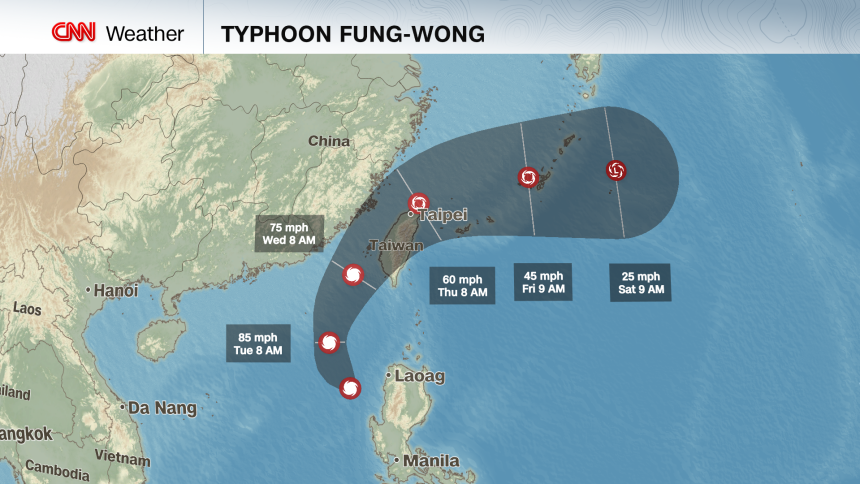
At its height, the typhoon’s massive circulation spanned 1,800 km — enough to cover the entire country, PAGASA weather specialist Benison Estareja told CNN.
Philippine President Ferdinand Marcos Jr. declared a state of emergency on Thursday due to the extensive devastation caused by Kalmaegi and the expected damage from Fung-wong.
More than 325 domestic and 61 international flights were canceled over the weekend and into Monday, and more than 6,600 commuters and cargo workers were stranded in ports after the coast guard prohibited ships from venturing into rough seas, AP reported. About 3 million people were left without power on Sunday, according to Philippines News Agency.
While the Philippines has not requested international aid after Kalmaegi, officials said the US and Japan are prepared to assist, and authorities have ordered schools and most government offices to close until Wednesday, according to AP.
No pause for relief
The Philippines is no stranger to typhoons, and Fung-wong is the 21st named storm to impact the country this year, according to local officials.
Its predecessor Kalmaegi left a trail of death and devastation as it tore through the central Philippines on Tuesday, reducing entire neighborhoods to rubble and displacing tens of thousands of people. At least 188 people were killed, most in Cebu province, a tourist hotspot, local authorities said.
Though not the strongest storm to hit the country this year, Kalmaegi was slow-moving and dumped huge volumes of water over highly populated areas. Officials said most people died from drowning.
Its impact was worsened by clogged waterways in an already flood-prone area, and an apparent lack of understanding of early warnings, Alejandro of the Office of Civil Defense, told local media.
The Philippines is one of Asia’s most flood-prone countries but this year it has also been mired in a massive corruption scandal involving flood control projects that have brought thousands of protesters onto the streets.
Dozens of legislators, senators and construction companies have been accused of receiving kickbacks with money intended for thousands of flood control projects.
Scientists have long warned the human-caused climate crisis – for which industrialized nations bear greater historical responsibility – has only exacerbated the scale and intensity of regional storms that disproportionately impact populations in the Global South.
The Philippines is one area where the weather is changing, with more intense storms and severe tropical storms with a wide rain band, Meily said.
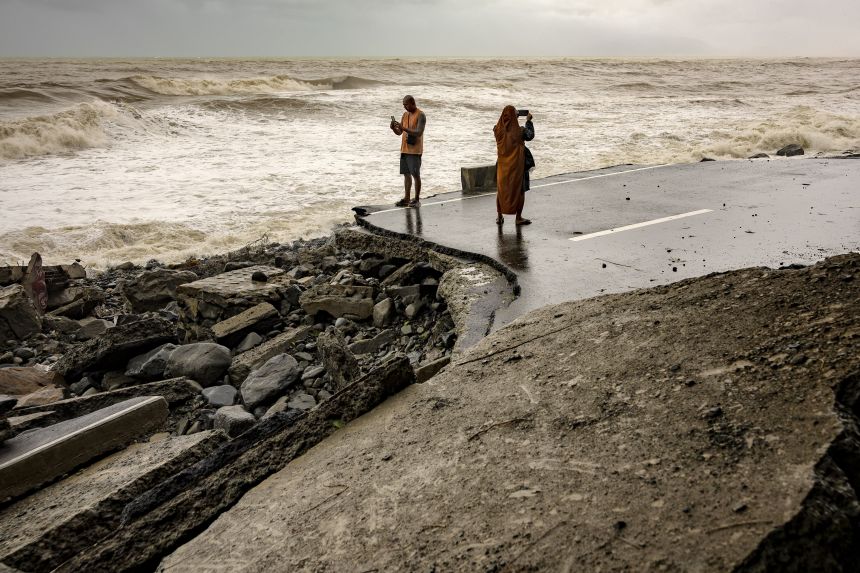
“In the past, we used to focus on where the storm would make landfall. But now we have to consider the rain band because it’s so wide in scope that areas far away from where the storm makes land are getting flooded.”
The western Pacific is the most active tropical basin on Earth but global ocean temperatures have been at record levels for each of the last eight years.
Hotter oceans, fueled by human-caused global warming, provide ample energy for storms to strengthen.
The climate crisis is supercharging rainfall events as warmer air can hold more moisture, which it then wrings out over towns, cities and communities, as it already has this week in Southeast Asia.

